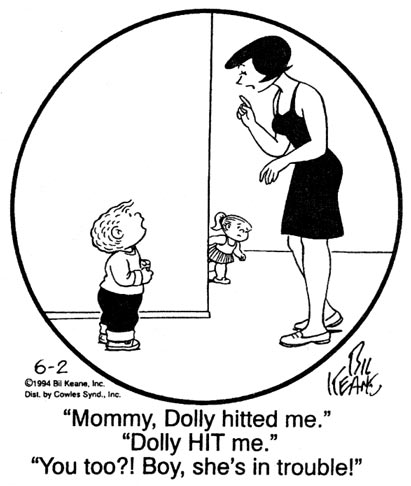
This Article From Issue
March-April 2000
Volume 88, Number 2
DOI: 10.1511/2000.19.0
Words and Rules: The Ingredients of Language. Steven Pinker. 348 pp. Basic Books, 1999. $26.
You might have wondered why the past tense of "keep" is "kept" and not "keeped." Or you may have pondered the mechanisms by which ordinary people moving through history change the way language is spelled (spelt?) and spoken. According to Steven Pinker, the human language system uses two mental mechanisms: words and rules. Words are memorized and often refer to everyday things. Rules help us to generate varied and original utterances. Irregular verbs are unpredictable in form because they are memorized as individual words. On the other hand, regular past-tense forms of verbs are predictable in form and sound, and they are generated freely because they are produced by rules.
Together, words and rules allow us to answer the question posed on the first page of this engaging book: "What is the trick behind our ability to fill one another's heads with so many different ideas?" Pinker, an eminent cognitive neuroscientist at MIT, more or less answers this question for us by relying on this idea about the two components of language and on a single phenomenon of regular and irregular verbs, found in all languages. He postulates that just two components of language are sufficient for answering the big question posed at the beginning of this book, and he uses this universal phenomenon of regular and irregular verbs to make his point.
Trained as an experimental psychologist, Pinker has investigated language acquisition (and visual cognition) in the laboratory. The phenomenon Pinker elects to exemplify his language theory is that of the existence of both regular verbs and the nearly 200 irregular English verbs, which he has studied for over a decade. He defends his selection of such a small unit of analysis by explaining that regular and irregular verbs are the "machinery" responsible for much grander intricacies of language.

From Words and Rules.
After examining in turn regular verbs, irregular verbs and the merits of words-and-rules theory, Pinker offers the reader evidence of the theory at work. He explains why we say "lowlifes" instead of "lowlives" and why a child learning English might say "it bleeded" instead of "it bled." The particularly meaty section of the book deals with a modification of the words-and-rules theory after two distinguished explanations of the English past tense are considered in depth. Rumelhart and McClelland's classic anti-rule, connectionist theory proposes that we form the past tense by associating words with those we already know. And Chomsky and Halle's elegant anti-memory, rule-based theory suggests that we form the past tense by manipulating mental rules. Not surprisingly, Pinker concludes they are both correct.
Following the logic of the current reductionist Zeitgeist, if the most recent linguistic research is accurate in proposing that we store in memory an enormous, finite number of morphemes (words and parts of words) and ply them with a small number of rules to create everything we write and say, then there should be some hard-wired evidence in the structure of the brain. What support for the words-and-rules theory can be obtained from cognitive neuroscience techniques? In a chapter called "The Black Box," Pinker takes us on an excursion through brain disorders and imaging techniques to find the neural underpinnings of the ingredients of language.
As always, Pinker entertains with humor, wit and limpid writing. The numerous lively literary and historical offerings liberally sprinkled throughout the text have the effect of balancing the pedantic lists of nouns and verbs with their multiple permutations. With this recent title and with his previous ones, The Language Instinct (1994) and the Pulitzer Prize-nominated How the Mind Works (1997), Pinker joins the exalted ranks of Stephen Jay Gould, Richard Dawkins, Richard Feynman and Daniel Dennett (to mention just a few examples) as one of the notable popularizers of contemporary science, a point of some controversy among linguists, the finer points of which one can discern from eavesdropping on their online discussion group. This is a highly informative read for anyone who wonders what irregular verbs have to tell us about the structure of the mind's language system.—Evangeline A. Wheeler, Psychology, Towson University
American Scientist Comments and Discussion
To discuss our articles or comment on them, please share them and tag American Scientist on social media platforms. Here are links to our profiles on Twitter, Facebook, and LinkedIn.
If we re-share your post, we will moderate comments/discussion following our comments policy.